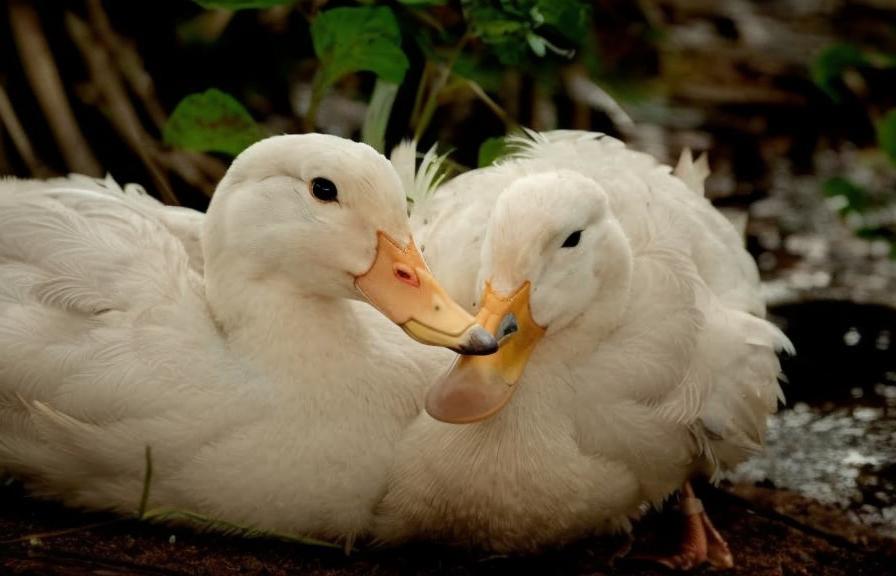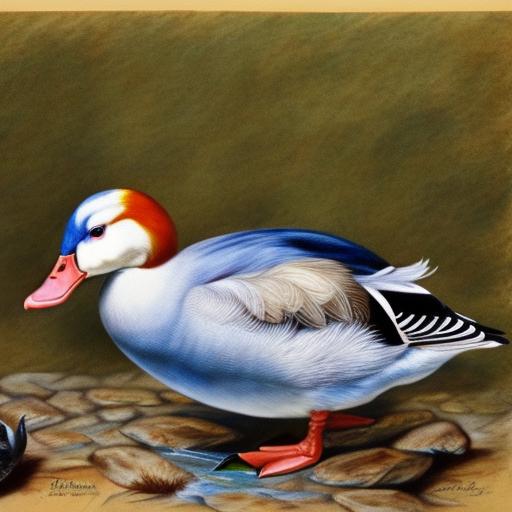The American Poultry Association (APA) is a well-respected organization that has been dedicated to the preservation and promotion of purebred poultry since its establishment in 1873. The APA has played a crucial role in the development and standardization of various duck breeds, ensuring that they meet specific criteria for exhibition and breeding purposes. The APA has recognized a wide variety of duck breeds, each with its own unique characteristics and traits. These breeds have become an integral part of the poultry industry, contributing to the diversity and sustainability of duck populations in the United States.
Key Takeaways
- American Poultry Association (APA) recognizes and standardizes various duck breeds for exhibition and breeding purposes.
- The history and development of APA duck breeds dates back to the 19th century, with a focus on preserving and promoting purebred ducks.
- APA duck breeds are known for their diverse characteristics and traits, including size, color, and temperament, making them suitable for different purposes.
- Popular and recognized duck breeds within the APA include the Pekin, Rouen, and Indian Runner, each with its own unique features and qualities.
- Breeding and rearing practices for APA duck breeds are essential for maintaining breed standards and producing high-quality ducks for the poultry industry.
History and Development of American Poultry Association Duck Breeds
The history of American Poultry Association duck breeds dates back to the late 19th century when the organization began to establish breed standards for various poultry species, including ducks. The APA’s Standards of Perfection, first published in 1874, provided detailed descriptions and illustrations of different duck breeds, setting the benchmark for their development and exhibition. Over the years, the APA has continued to refine and update these standards, taking into account changes in breed characteristics and traits. This has helped to ensure the preservation and improvement of duck breeds, maintaining their genetic diversity and overall quality.
The development of APA duck breeds has been influenced by a combination of factors, including selective breeding, geographical location, and specific breeding goals. Breeders have worked tirelessly to enhance desirable traits such as plumage color, body conformation, and egg production, resulting in the creation of distinct duck breeds that are well-suited for different purposes. The APA’s recognition of these breeds has provided breeders with a platform to showcase their efforts and contribute to the conservation of rare and heritage duck breeds.
Characteristics and Traits of American Poultry Association Duck Breeds
American Poultry Association duck breeds are known for their diverse and unique characteristics, making them valuable assets to the poultry industry. From the majestic Pekin with its snowy white plumage to the striking Mallard with its iridescent green head, each breed possesses specific traits that set them apart from one another. These traits can include body size, shape, color patterns, temperament, and egg-laying capabilities, all of which contribute to the breed’s overall utility and appeal.
In addition to their physical attributes, APA duck breeds also exhibit distinct behavioral traits that make them well-suited for different environments and purposes. Some breeds are known for their foraging abilities and adaptability to free-range settings, while others excel in confinement and commercial production systems. Understanding these traits is essential for breeders and poultry enthusiasts who wish to select the most suitable duck breed for their specific needs and preferences.
Popular and Recognized Duck Breeds within the American Poultry Association
The American Poultry Association has recognized a wide range of duck breeds, each with its own unique characteristics and historical significance. Some of the most popular and well-established duck breeds within the APA include the Pekin, Rouen, Khaki Campbell, Indian Runner, and Muscovy. These breeds have gained widespread recognition for their distinct traits and utility in various poultry-related activities.
The Pekin duck is perhaps one of the most iconic APA-recognized breeds, known for its large size, rapid growth rate, and excellent meat quality. Originally imported from China in the 19th century, the Pekin has become a staple in commercial duck production due to its high feed conversion efficiency and adaptability to intensive farming systems. Similarly, the Rouen duck, with its striking plumage reminiscent of the wild Mallard, has gained popularity as a dual-purpose breed valued for both meat and exhibition purposes.
On the other hand, the Khaki Campbell has earned a reputation for its exceptional egg-laying capabilities, often outperforming many chicken breeds in terms of egg production. This makes it a popular choice for small-scale egg production operations and backyard poultry enthusiasts. The Indian Runner, with its distinctive upright posture and prolific foraging behavior, has also garnered attention for its unique appearance and utility as an efficient forager.
Lastly, the Muscovy duck stands out as a breed with distinct characteristics that set it apart from other APA-recognized ducks. Known for its quiet demeanor, strong flying ability, and lean meat quality, the Muscovy has become a favorite among homesteaders and small-scale farmers seeking a versatile and self-sufficient duck breed.
Breeding and Rearing Practices for American Poultry Association Duck Breeds
Breeding and rearing American Poultry Association duck breeds requires careful consideration of various factors to ensure the preservation of breed standards and genetic diversity. Breeders must adhere to the APA’s guidelines for breeding practices, which emphasize the selection of high-quality breeding stock based on specific criteria such as conformation, plumage color, temperament, and overall health. This helps to maintain the integrity of each breed while striving for continuous improvement in desirable traits.
In addition to selective breeding, proper rearing practices are essential for ensuring the health and well-being of APA-recognized duck breeds. This includes providing adequate nutrition, housing, and environmental enrichment to support their physical and behavioral needs. For example, waterfowl breeds such as the Indian Runner and Muscovy require access to water for bathing and preening, while breeds like the Khaki Campbell benefit from spacious outdoor areas for exercise and foraging.
Furthermore, breeders must be mindful of genetic diversity within APA duck breeds to prevent inbreeding depression and maintain overall breed vigor. This may involve collaborating with other breeders or participating in breed conservation programs to exchange genetic material and introduce new bloodlines into existing populations. By implementing these breeding and rearing practices, breeders can contribute to the long-term sustainability and welfare of American Poultry Association duck breeds.
Exhibition and Show Standards for American Poultry Association Duck Breeds

The American Poultry Association’s exhibition standards play a crucial role in showcasing the beauty and diversity of APA-recognized duck breeds. These standards outline specific criteria for evaluating each breed’s conformation, plumage color, size, shape, and overall presentation in exhibition settings. Judges use these standards as a benchmark for assessing individual birds during poultry shows and competitions, awarding prizes based on how well they conform to breed-specific traits.
Exhibitors must carefully prepare their ducks for show by grooming their plumage, ensuring proper body condition, and acclimating them to the show environment. This involves regular grooming sessions to maintain clean and well-kept feathers, as well as providing appropriate housing and nutrition to support their physical development. Additionally, exhibitors may engage in training exercises to familiarize their ducks with handling and posing techniques that showcase their best attributes during judging.
Participating in poultry exhibitions not only allows breeders and enthusiasts to display their hard work and dedication but also serves as a platform for networking with other like-minded individuals who share a passion for APA-recognized duck breeds. It provides an opportunity to exchange knowledge, learn from experienced exhibitors, and contribute to the promotion of breed standards within the poultry community.
Importance and Impact of American Poultry Association Duck Breeds in the Poultry Industry
American Poultry Association duck breeds have made significant contributions to the poultry industry by providing valuable genetic resources, diverse utility, and cultural significance. These breeds play a crucial role in maintaining genetic diversity within domestic duck populations, which is essential for adapting to changing environmental conditions, disease resistance, and overall breed resilience. By preserving rare and heritage duck breeds through exhibition, breeding programs, and conservation efforts, the APA has helped safeguard their genetic integrity for future generations.
Furthermore, APA-recognized duck breeds offer a wide range of utility across different sectors of the poultry industry. From meat production to egg-laying capabilities, these breeds cater to various market demands and consumer preferences. For example, the Pekin duck’s rapid growth rate and high meat yield make it an ideal choice for commercial meat production operations seeking efficient conversion of feed into high-quality protein. On the other hand, egg-laying breeds such as the Khaki Campbell provide a sustainable source of fresh eggs for local markets and small-scale producers.
In addition to their economic importance, American Poultry Association duck breeds hold cultural significance as part of our agricultural heritage. They represent a living link to our past traditions and serve as ambassadors for promoting awareness about poultry conservation and responsible breeding practices. By recognizing the importance of these breeds within our agricultural landscape, we can ensure their continued presence in our communities while celebrating their beauty and utility.
In conclusion, American Poultry Association duck breeds have played a vital role in shaping the diversity and sustainability of domestic duck populations in the United States. Through careful breeding practices, exhibition standards, and conservation efforts, these breeds have become emblematic of our rich poultry heritage while contributing to the economic viability of the poultry industry. As stewards of these valuable genetic resources, it is our responsibility to uphold their standards of perfection while promoting their importance within our agricultural landscape. By doing so, we can ensure that future generations will continue to benefit from the beauty and utility of American Poultry Association duck breeds.
If you’re interested in learning more about American Poultry Association duck breeds, you might also want to check out this insightful article on creating the perfect farmhouse chicken coop at PoultryWizard. It provides valuable tips and guidance on designing a comfortable and functional space for your poultry.
FAQs
What is the American Poultry Association?
The American Poultry Association (APA) is a organization that promotes and preserves standard-bred poultry breeds in the United States. It establishes breed standards and holds poultry shows and events.
How many duck breeds are recognized by the American Poultry Association?
The American Poultry Association recognizes 11 duck breeds, which are categorized into three classes: Light, Medium, and Heavy.
What are some examples of duck breeds recognized by the American Poultry Association?
Some examples of duck breeds recognized by the American Poultry Association include the White Crested, Call, Cayuga, and Indian Runner.
What is the purpose of recognizing duck breeds by the American Poultry Association?
Recognizing duck breeds helps to preserve and promote the standard-bred qualities of each breed, ensuring their genetic diversity and heritage are maintained for future generations.
How does the American Poultry Association support duck breeders and enthusiasts?
The American Poultry Association provides resources, education, and networking opportunities for duck breeders and enthusiasts. It also hosts poultry shows and events where breeders can showcase their ducks and connect with others in the poultry community.
Meet Walter, the feathered-friend fanatic of Florida! Nestled in the sunshine state, Walter struts through life with his feathered companions, clucking his way to happiness. With a coop that’s fancier than a five-star hotel, he’s the Don Juan of the chicken world. When he’s not teaching his hens to do the cha-cha, you’ll find him in a heated debate with his prized rooster, Sir Clucks-a-Lot. Walter’s poultry passion is no yolk; he’s the sunny-side-up guy you never knew you needed in your flock of friends!







